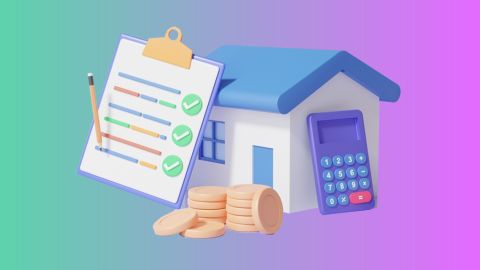An Encumbrance Certificate (EC) download is an important step in any property transaction. This certificate confirms that a property is free from financial liabilities or legal disputes, giving buyers and lenders complete confidence. It serves as proof of clear ownership and protects against any hidden claims or mortgages.
Today, obtaining an EC has become more convenient with online services. Many state governments allow applicants to download the document digitally. By searching for EC download on the respective state’s property registration portal, you can quickly access this essential document.
For buyers, sellers, or lenders, ensuring a property’s encumbrance-free status is vital. The EC plays a pivotal role in verifying ownership and validating the transaction. Utilising online tools for EC download streamlines the process, saving time and effort. Opting for a loan against property through Bajaj Finance offers a smart way to access funds for major investments or debt consolidation while maintaining financial stability. By integrating the encumbrance certificate and loan against property into a well-rounded financial strategy, individuals can make the most of their resources and confidently work toward achieving their financial objectives.
What is an Encumbrance Certificate (EC)?
An encumbrance certificate is an official document issued by the government to confirm the ownership and legal status of a property. It also verifies whether the property has any encumbrances, such as pending loans, mortgages, or legal claims. This document is vital because it provides transparency during property-related transactions, ensuring that the property is free from debts or legal issues.
It acts as a safeguard for individuals buying, selling, or applying for financing against a property. So, if you plan to make the most of your property’s value, leverage the power of your property to fulfil multiple financial needs. Get a loan against property with a simple application process and access funds conveniently whenever required.
How to download the EC online in India?
With advancements in technology, downloading your EC online has become easier. The online method saves time, effort and avoids the need for physical paperwork. Below is the step-by-step guide to downloading your EC online.
Step-by-step process for downloading EC
The following steps will help you download your EC online with ease. The table below provides a quick and visual breakdown of the entire process:
Step 1: Visit the official property registration portal.
Step 2: Log in using your registration credentials.
Step 3: Look for the “EC Online” or “Encumbrance Certificate” option.
Step 4: Input the Document Number, Survey Number, or other relevant property details.
Step 5: Pay any applicable fees (if required) and proceed.
Step 6: Submit the request and download your EC.
This step-by-step process ensures a smooth experience when applying for and downloading the EC online.
Why is an encumbrance certificate required?
An encumbrance certificate is required for multiple reasons, depending on the property transaction at hand. Here are some common scenarios:
Buying or selling property: An EC proves that the seller has clear ownership rights and that the property is free of any financial claims.
Loan against property: Financial institutions often ask for the EC to ensure that the property is legally clear for loan approval.
Property title verification: An EC establishes whether the property has any pending liens or disputes.
Legal clarity: An EC shows if a property is free from any legal or financial burden, ensuring a smooth property transaction.
Having an EC can prevent unnecessary legal issues and financial losses during any property deal.
How to download the EC online in India?
With advancements in technology, downloading your EC online has become easier. The online method saves time, effort, and avoids the need for physical paperwork. Below is the step-by-step guide to downloading your EC online.
Step-by-step process for downloading EC
The following steps will help you download your EC online with ease. The table below provides a quick and visual breakdown of the entire process:
Step 1: Visit the official property registration portal.
Step 2: Log in using your registration credentials.
Step 3: Look for the “EC Online” or “Encumbrance Certificate” option.
Step 4: Input the Document Number, Survey Number, or other relevant property details.
Step 5: Pay any applicable fees (if required) and proceed.
Step 6: Submit the request and download your EC.
This step-by-step process ensures a smooth experience when applying for and downloading the EC online.
Eligibility for online EC download
Not every individual can download an EC online. Here are the eligibility criteria to access the EC online:
Ownership confirmation: Only the legal property owner can download the EC unless otherwise authorised.
Authorised representatives: Family members or legal heirs can apply with appropriate ownership verification.
Registered properties: Only properties officially registered with the local registration office qualify for online EC download.
Meeting these eligibility conditions ensures that your request won’t face delays or rejection.
EC download options: Document number, survey number, etc.
When attempting an EC download online, you’ll come across several options to enter the necessary details. These typically include:
Document number: The unique number associated with the registered property document.
Survey number: The official number linked to a property’s land parcel.
Owner’s name: This helps confirm the property owner’s identity and ownership.
Time period: Enter the specific years for which you want the EC data.
Having these details accurate will make the EC online download much easier and hassle-free.
How accurate is the information in the EC download?
The information in an EC is accurate when obtained from official government property registration portals. However, there can be occasional errors, especially in properties with recent financial transactions or changes. If discrepancies arise, you should contact the local sub-registrar’s office for clarification or corrections.
ECs typically include:
Loan details, if any exist.
Owner details and their history of financial transactions related to the property.
Land or property details, including property ownership history.
Always verify the details against property-related documents to ensure correctness.
Common issues in downloading EC and how to resolve them
While online EC view downloads are user-friendly, you may face a few technical problems. Common issues include:
Payment failure: Verify your payment details and retry or check with the bank.
Incorrect property details: Ensure accurate details like document numbers and survey numbers.
Technical glitches: Wait and retry at a less busy time to avoid server overloads.
Access restrictions: Ensure you have the correct login credentials or permissions.
If your property documents are verified and up to date, you can also make the most of your asset’s value. Your property can come to your rescue when needed, secure our loan against property and access funds quickly with minimal effort.
Conclusion
An Encumbrance Certificate (EC) is a vital document that proves the ownership, legal status, and financial condition of a property. Whether you are buying property, selling it, or applying for a loan against property, having a clean EC can make your process smoother and more secure. Using EC online downloads is a convenient way to access this information quickly, saving time and reducing paperwork. You can also make informed financial decisions by checking tools like a loan against property emi calculator and staying updated on the latest loan against property interest rate, which directly impacts your repayment planning.
By understanding the steps involved and the importance of verifying EC details, you can ensure a transparent, hassle-free, and legally sound property transaction. Always consult the official government portal or legal experts if you encounter any issues.




